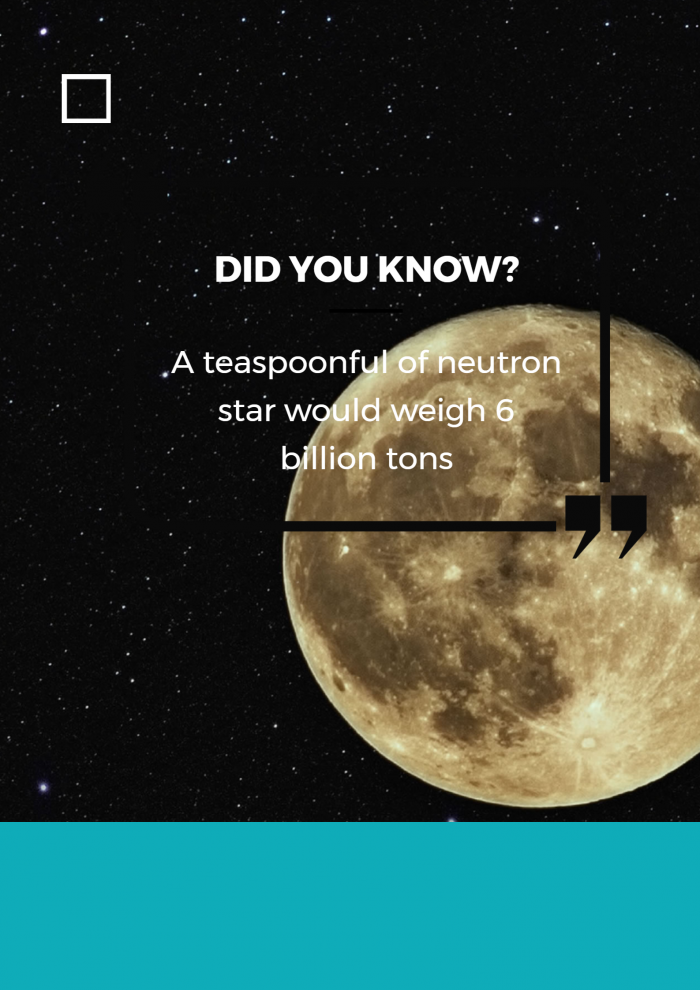This article contains affiliate links

What’s A Neutron Star?
A neutron star is the collapsed core of a giant star which before collapse had a total mass of between 10 and 29 solar masses. Neutron stars are the smallest and densest stars, excluding black holes, hypothetical white holes, quark stars and strange stars. Neutron stars have a radius on the order of 10 kilometres (6.2 mi) and a mass of about 1.4 solar masses. They result from the supernova explosion of a massive star, combined with gravitational collapse, that compresses the core past white dwarf star density to that of atomic nuclei.
Once formed, they no longer actively generate heat, and cool over time; however, they may still evolve further through collision or accretion. Most of the basic models for these objects imply that neutron stars are composed almost entirely of neutrons (subatomic particles with no net electrical charge and with slightly larger mass than protons); the electrons and protons present in normal matter combine to produce neutrons at the conditions in a neutron star. Neutron stars are partially supported against further collapse by neutron degeneracy pressure, a phenomenon described by the Pauli exclusion principle, just as white dwarfs are supported against collapse by electron degeneracy pressure. However neutron degeneracy pressure is not by itself sufficient to hold up an object beyond 0.7M☉ and repulsive nuclear forces play a larger role in supporting more massive neutron stars. If the remnant star has a mass exceeding the Tolman–Oppenheimer–Volkoff limit of around 2 solar masses, the combination of degeneracy pressure and nuclear forces is insufficient to support the neutron star and it continues collapsing to form a black hole.
They are so dense that a normal-sized matchbox containing neutron-star material would have a weight of approximately 3 billion tonnes,
the same weight as a 0.5 cubic kilometre chunk of the Earth (a cube with edges of about 800 metres) from Earth’s surface. Their magnetic fields are between 108 and 1015 (100 million to 1 quadrillion) times stronger than Earth’s magnetic field. The gravitational field at the neutron star’s surface is about 2×1011 (200 billion) times that of Earth’s gravitational field.
Curated from Wikipedia. You can read the rest at https://en.wikipedia.org/wiki/Neutron_star